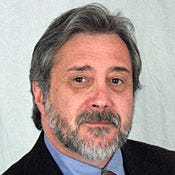Emerging Wireless Medical Technology Gets FCC BlessingEmerging Wireless Medical Technology Gets FCC Blessing
FCC proposes increased spectrum capacity for Medical Body Area


10 Wearable Devices To Keep Patients Healthy
10 Wearable Devices To Keep Patients Healthy (click image for larger view and for slideshow)
In a bid to maximize the potential of Medical Body Area Network (MBAN) devices--miniaturized body-worn sensors that collect patient-specific information including EKG readings and respiratory function--the FCC plans to allow more intensive use of the portion of the electromagnetic spectrum, the 2.36-2.40 gHz band, that the devices operate on. Some technologists believe MBAN represents a new approach to patient monitoring that offers the potential to eliminate bedside cables traditionally used to capture vital signs.
At a press conference last Thursday at George Washington University Hospital (GWUH) in Washington, D.C, FCC chairman Julius Genachowski said that the proposed rules "represent a multi-industry effort to foster innovation in the spectrum band by allowing distinct but compatible users to share these airwaves." The allocation will increase spectrum capacity and enhance the reliability of wireless medical technology. "MBAN is a big deal and we are just at the beginning," Genachowski said.
The FCC will conduct an open meeting on MBANs on May 24, at which point it will consider adopting new rules that would make the U.S. the first country in the world to dedicate spectrum for MBANs in hospitals, clinics, and doctors' offices.
[ Is it time to re-engineer your clinical decision support system? See 10 Innovative Clinical Decision Support Programs. ]
Genachowski, who was joined by executives from GE Healthcare and Phillips Healthcare at the news conference, said that MBAN would improve patient care, increase mobility and encourage medical innovation. "By unleashing spectrum for MBANS we can save lives and lower health care costs. In 2009, we began developing our country's first national broadband plan, which identified health care as an area of enormous promise for broadband-enabled innovation." He added that the FCC is pursuing a health strategy with several key components that will: promote connectivity; foster fast-paced innovation of wireless networks, medical devices and mobile apps; encourage greater adoption of life-saving health technology; and ensure that spectrum is optimally allocated and managed.
Genachowski believes that spectrum is the oxygen that fuels smart phones and tablet PCs. "Without spectrum we don't have MBANs and without smart spectrum policies we don't provide incentives for companies like GE and Phillips to say, 'Let's invest some R&D dollars in this because if we develop something of value, we can get it to market.' We want to make it easier for companies like GE and Phillips and others to test spectrum-based ideas."
Richard J. Katz, MD, director of the division of cardiology at GWUH, said that the hospital has been working in the area of mobile health for several years. "We have projects on self-management of diabetes, hypertension, heart failure. We have grants for tracking wound healing in the ER with iPhones," Katz said. Similarly, Barry Wolfman, CEO and managing director of GWUH, said wireless monitoring is increasingly used for a wide variety of applications to monitor physiologic parameters such as vital signs, heart rate, respiration, and body temperatures. "The future of this technology is very, very promising," he said.
"By opening this new wireless spectrum for communicating health care information through this promising technology of MBANs, patient care and disease monitoring will be revolutionized in the not-too-distant future," said Michael Harsh, VP and CTO for GE Healthcare.
Anthony Jones, chief marketing officer for patient care and clinical informatics at Philips Healthcare, said, "MBAN allows us to monitor patients in a variety of locations beyond the four walls of the hospital. And it provides a certain level of comfort that encourages patient compliance and adherence that is very difficult to achieve today."
Genachowski said that MBAN technology also could be a platform for innovation. "We are not just authorizing the specific ideas that we saw. We're saying to GE Phillips and others, here's a new platform for wireless communications inside hospitals, inside homes, let's see the innovation that can improve health care and lower costs," he said.
Get the new, all-digital Healthcare CIO 25 issue of information Healthcare. It's our second annual honor roll of the health IT leaders driving healthcare's transformation. (Free registration required.)
About the Author
You May Also Like






